First ride: Scott Solace eRide 10 and Scott Solace Gravel eRide 10 go head to head
The bike twins share so much, so do you really need both options on the market?
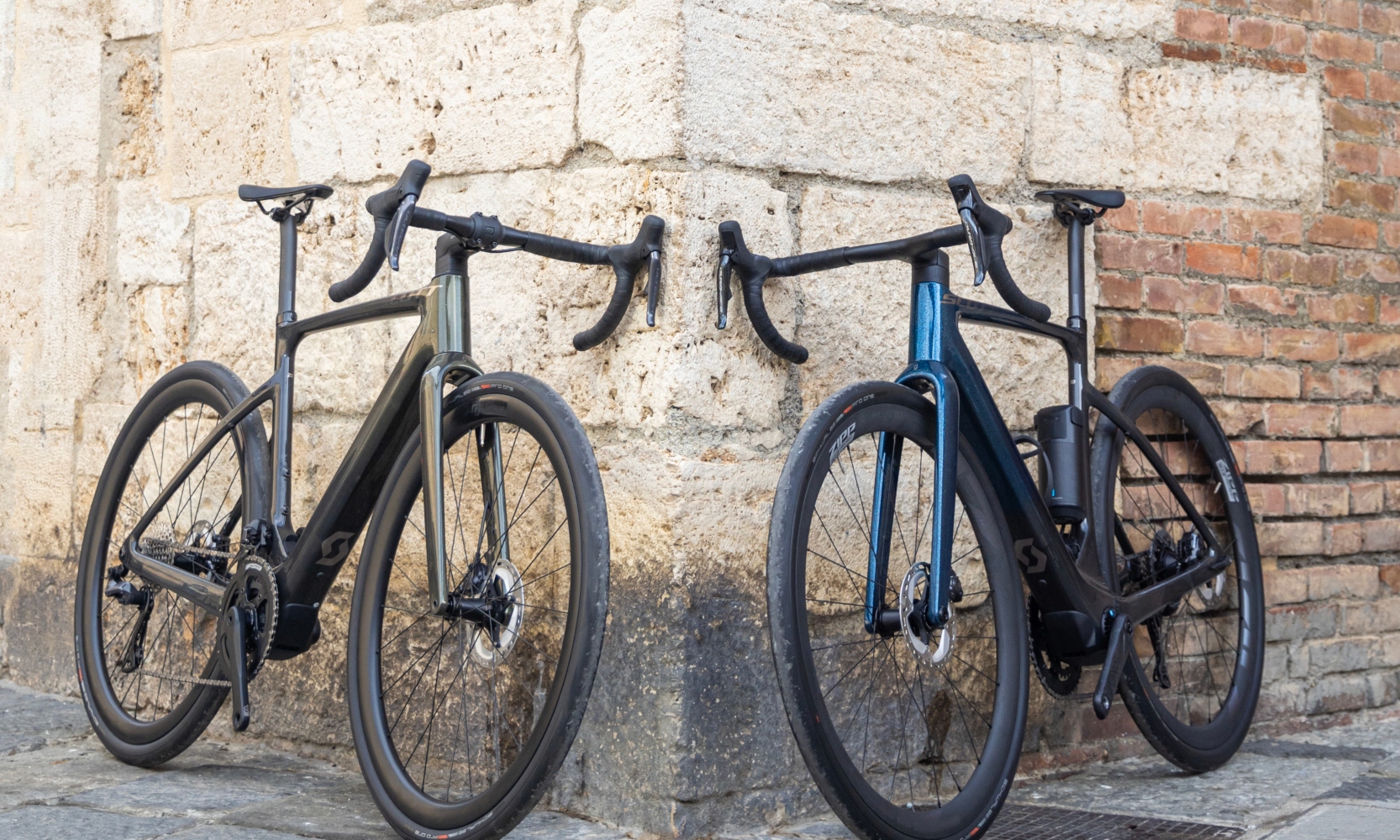
The Scott Solace eRide 10 and Scott Solace Gravel eRide 10 share the same frameset heart and motorised brain. Independently they are two exceptionally well built bikes that will without a doubt make you better riders, with or without the battery switched on. However, the real value is found when you head off road. Scott somehow has created the elixir of youth with its Solace Gravel eRide 10, making me feel like a young elite rider who's found a rich vein of form after just one ride. Unfortunately the favourite child does casts a shadow on its roadgoing sibling and takes all the limelight. The Solace ain't cheap, but gear this good isn't going to be. In other words - Scott, take my money.
-
+
Exceptionally well designed dual-purpose platform
-
+
Small motor size, low weight and clever position
-
+
Excellent battery range, size, and weight
-
+
Good specification on the Solace Gravel eRide 10
-
+
Surefooted, agile and capable riding experience
-
-
Prices require you to really want the bikes badly
-
-
Do you really need flagship Shimano Dura-Ace Di2 on the Solace eRide 10?
-
-
Solace eRide 10 road bike can be ridden at speeds that mostly make the motor superfluous.
-
-
You can trust Cycling Weekly.
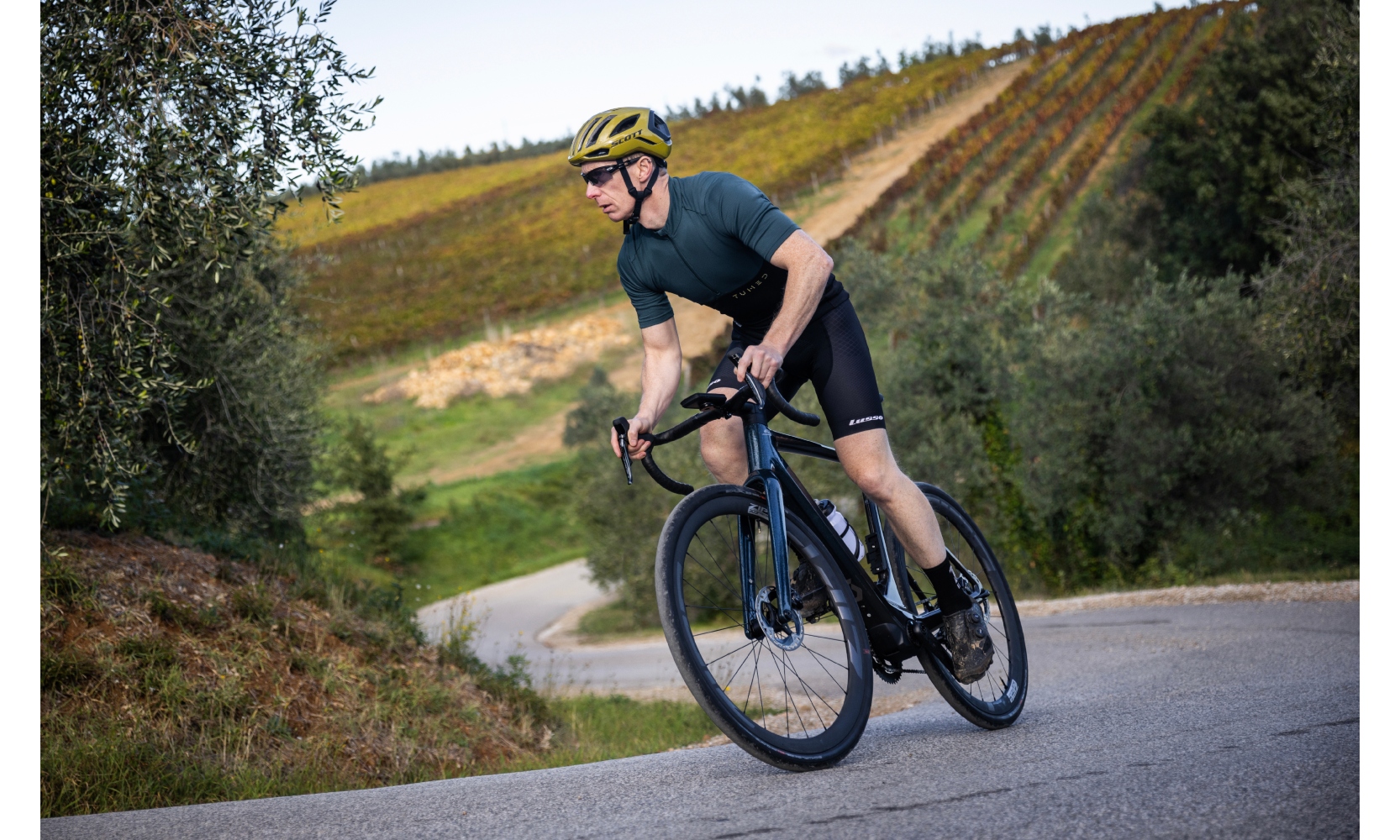
Arguably the only thing more nerve-wracking for a bike brand launching a new bike, is launching two new bikes at the same time. Well sort of.
Our launch story takes a deep dive into the tech behind the unidentical twins, the Scott Solace eRide and Solace Gravel eRide. Scott's new e-bike platform is a single frameset that's designed for both tarmac and gravel, with the spec determining the direction.
But here we compare the Solace eRide 10 and the Solace Gravel eRide 10, the two top-tier models in the new range. The former is the road version and the latter, as you can tell by the name, the off-road one.
We climbed on board both the Solace eRide bikes late autumn in Italy over the course of a couple of days.
With Italy known for some of the best and most iconic roads and gravel riding - think Strade Bianche - plus a bit of autumn sun and we had the perfect test bed environment in which to grab a several hours' riding time.
First impressions
The immediate thing to note is just how polished the bikes are. And I'm not just talking about the paint job.
Both the Scott Solace eRide 10 and Solace Gravel eRide 10 are are so well put together.
The brand has gone to great lengths to make the range look like a ‘normal’ bike. The slightly oversized down tube houses the main battery, so it has swollen the other tubing to maintain a sense of proportion and it's paid off.
A huge down tube is usually a dead giveaway for an e-bike and it's certainly not the case in this instance.
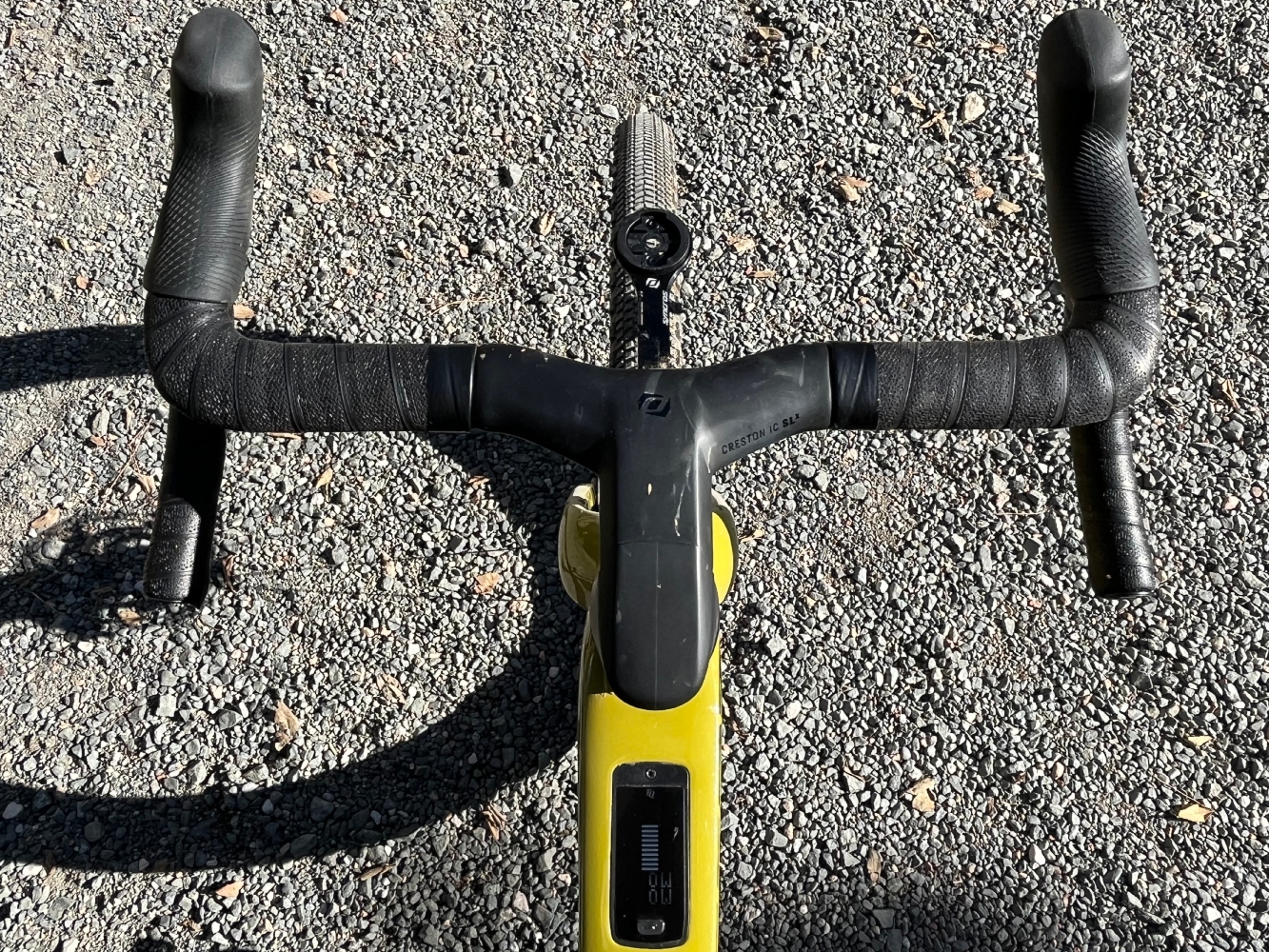
The front end of the Solace Gravel eRide 10 is so fresh, so clean.
The cockpit is equally well ordered and clean. Especially when it comes to the Solace Gravel eRide 10 with the specced SRAM Force eTap AXS, which makes any wires or cables a thing of the past, and the disc brakes internally routed.
While internal cabling can be a nightmare, the folk behind the design have clearly heard the curses from all bike mechanics when it comes to working on the bikes. So the Solace eRide is gifted clean, cableless lines with 100% internal cabling via the Syncros Creston IC bar and stem.
It might seem minor, but the discreet cable management system, which allows for a stem swap without cutting or re-cabling, wasn't lost on me.
While I could have spent several days chatting tech with the engineering team, the whole point of the test was to see how the bikes fared, and gravel was first up...
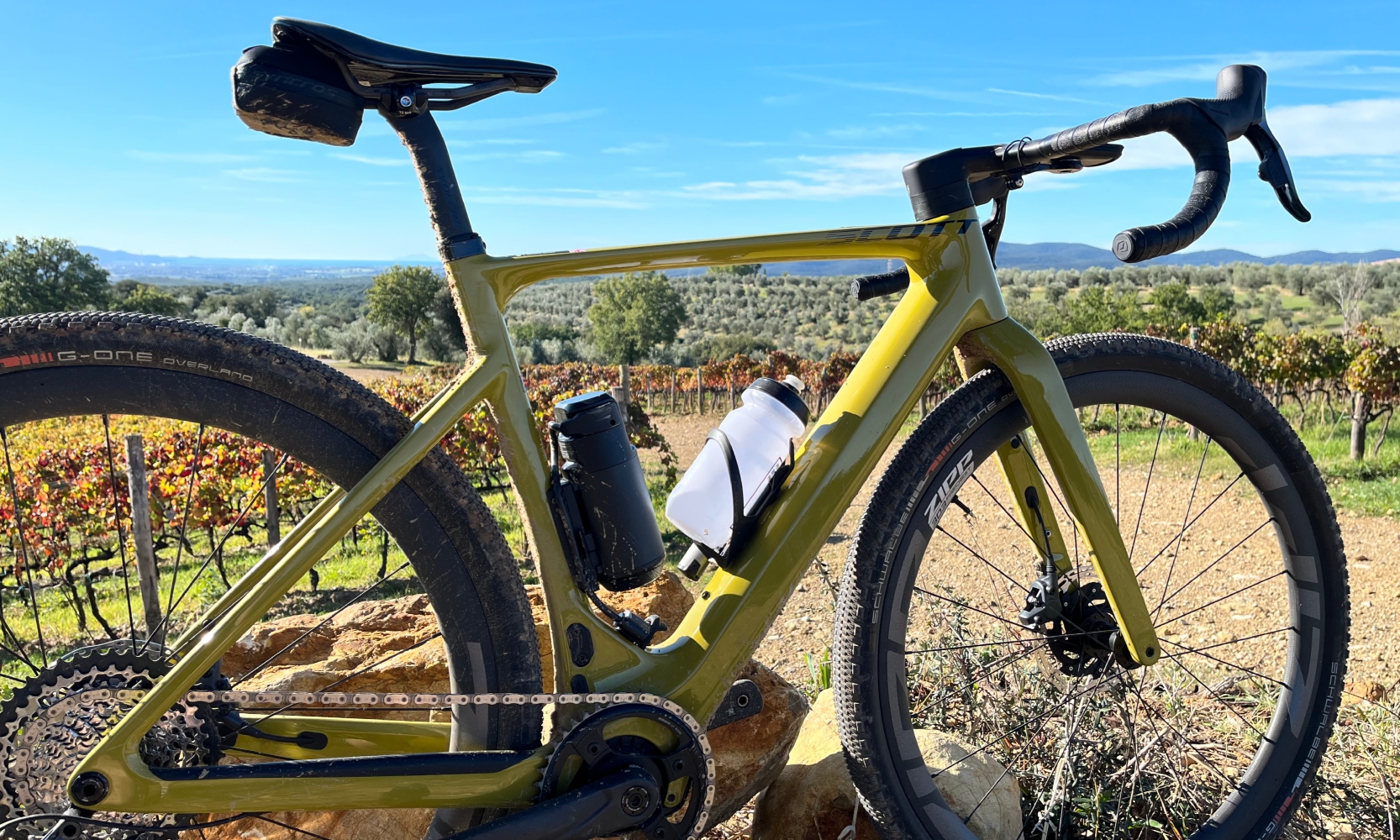
The Scott Solace Grave eRide 10 on it's first ride
Scott Solace Gravel eRide 10
The inaugural ride took place over a mixture of terrain. Yes gravel was present and correct, but so too were extended sections of wooded singletrack thrown in for good measure.
Perhaps not the natural environment for a drop-bar rigid bike but it did provide the Scott Solace Gravel eRide 10 bike (and rider) with a thorough going over.
From the off, the bike has impeccable manners. Like an capable thoroughbred, it was more than capable of tackling anything I threw at it without complaint.
The bike was so surefooted, with the ideal geometry for the job of tackling loose terrain surfaces, allowing me to place just enough weight over the front wheel to keep it firmly planted and hooked up.
This of course is also down to the Schwalbe G-One Overland gravel & e-bike tire which perfectly matched the undulating off-road terrain we were riding, which was drying out after recent rain.
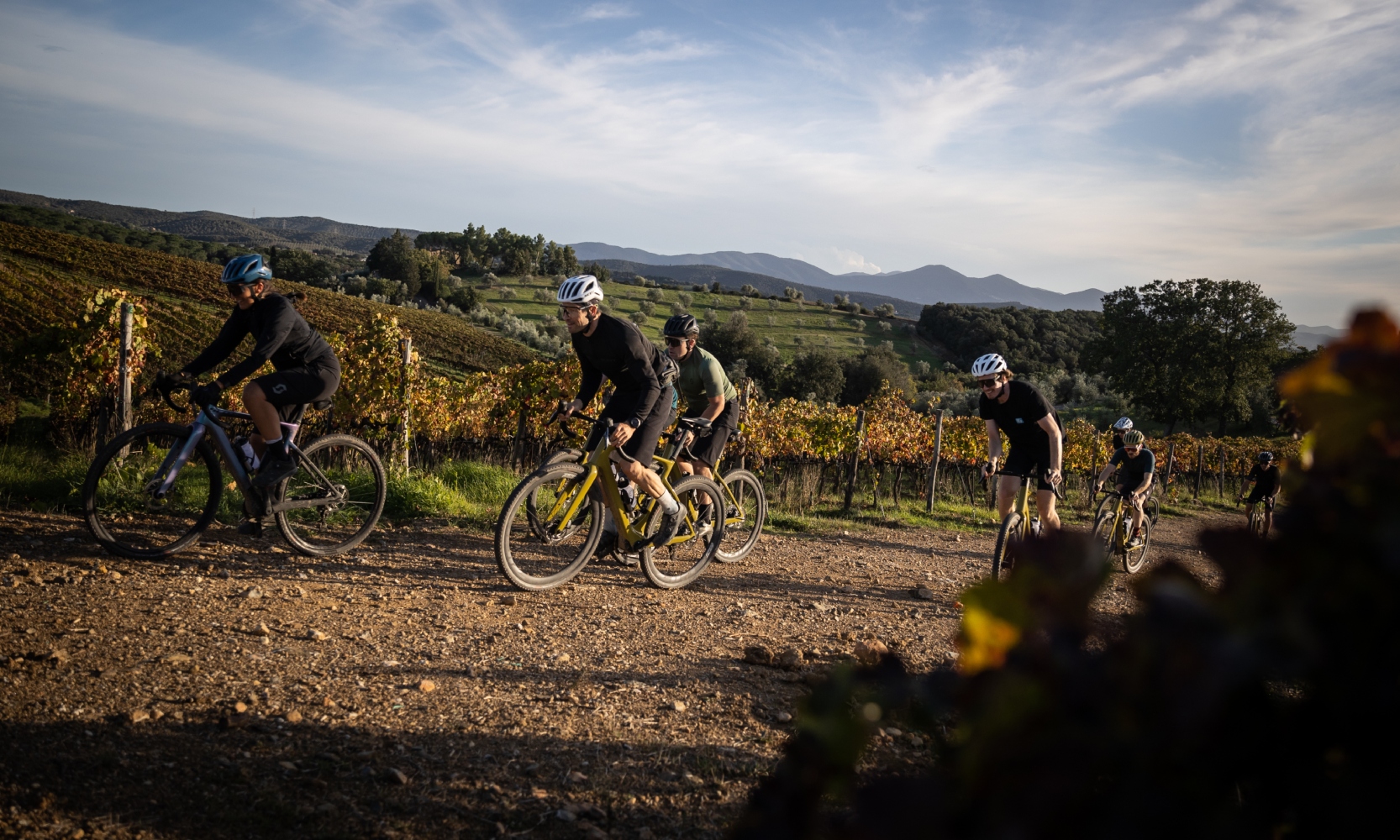
Gravel did feature on the Solace Gravel eRide 10 first ride
This initial sojourn on the gravel left a smile on the face. It was a reasonable 20 miles of pretty chilled-out affair. It gave me time to work out the 'brains' of the bike via the touchscreen display on the top tube. More on that in the general section below as it's applicable to both gravel and road machines.
My busy family life now permits a rather time-poor amount of riding, which usually leaves me cursing as to my lack of fitness on group rides, but this time I was more than capable of cruising round at a decent social pace.
With the TQ HPR50 motor and battery doing its thing, I was able to just thoroughly enjoy the longest ride I'd tackled in a long time. The power application was smooth, predictable and incredibly natural feeling, with no sudden turbo power boosts that some e-bike systems deliver - when the assist kicks and you're suddenly over-torqued and reaching for the brakes.
.
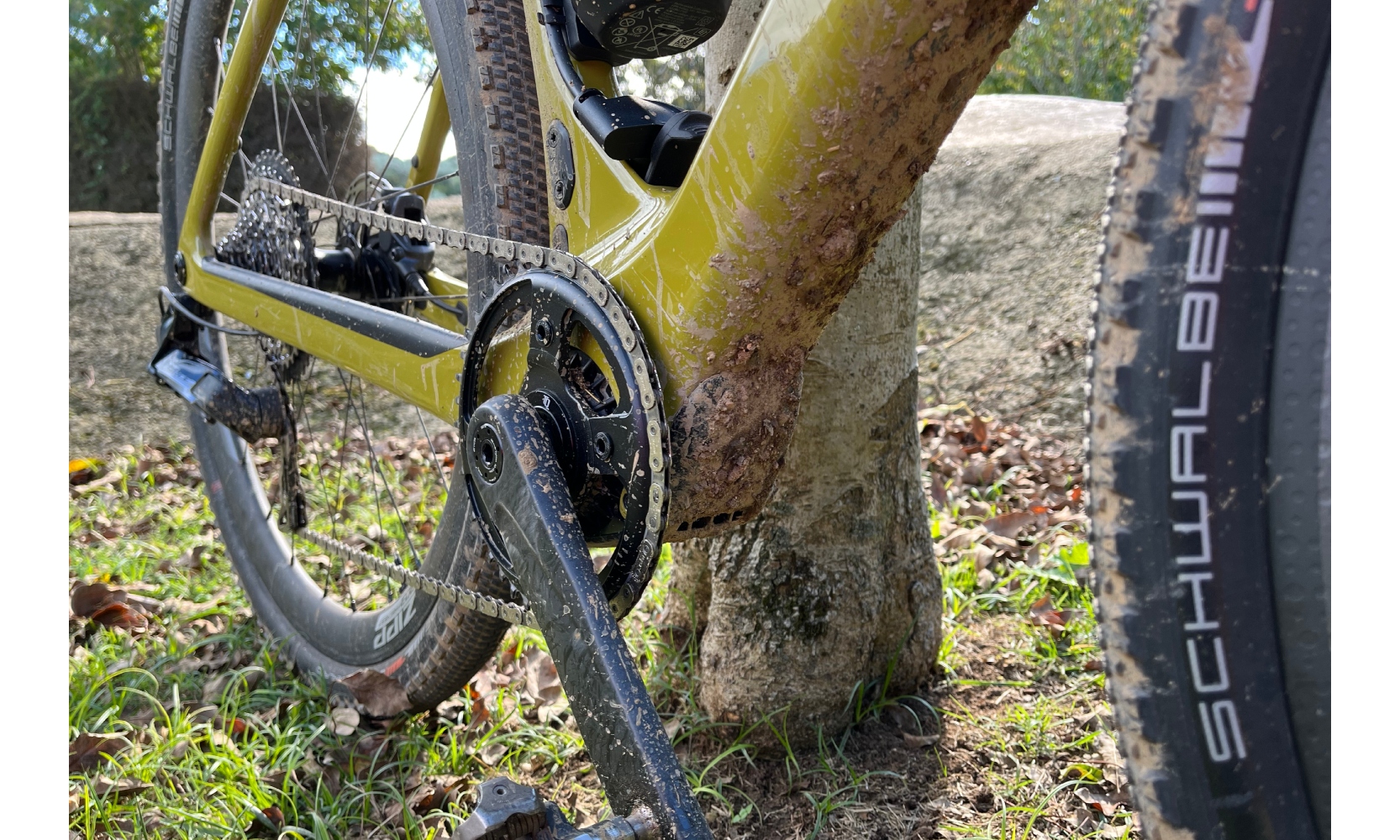
At speed the Solace Gravel eRide 10 was rapid
The second outing on this same bike and 20-mile loop was however a revelation.
The Scott mechanics joined us on what became the unofficial mechanics world champs. The exact same loop was tackled significantly faster and this is where I had a Scott Solace Gravel eRide 10 epiphany.
The bike is an absolute hooligan and I loved every minute of its wildness. I gave up on fiddling with the power settings and just left it on full gas and hooned round the trails with the rest of the riders, feeling like I was 20-year-old with a shedload of training under my belt coming into the peak of the season.
The contribution from the motor totally ironed out the terrain. Singletrack climbs became as much of a scream as the descents. At these elevated speeds, where nobody wants to give any quarter, pinpoint accuracy was key and the bike was so surefooted that it's happy to tackle whatever you throw at it.
It makes total sense to team this with the SRAM Force eTap AXS groupset. Not only is it very aesthetically pleasing and very lightweight, but the speed and accuracy of the shifting further enhances the Solace Gravel eRide 10.
The Solace Gravel eRide 10 seems to become even more capable at higher speeds. It opens up a whole new type of rider who could derive benefit from its magic assisted touch.
It allows you to deploy incredible useful power on singletrack or techy climbs, when fatigued lungs and legs normally cause riding errors.
I could even envisage a professional rider seeing the perks of ownership, allowing for technical skills training sessions without overloaded leg training.
Both gravel rides used a very similar amount of power; in fact only that of the small water bottle range extender, meaning that we could have gone on for hours.
The first ride was slower but lasted longer. The second was significantly faster but similarly shorter time duration. The hour and a half of near racing consumed a third of the available battery on the bike at the time. Extrapolating that out, and by my reckoning I would have had north of four hours of swift riding before an empty tank which, my reckoning thinks is probably more than enough for anyone at that speed

The only time the motor and small chain ring were used was climbing.
Scott Solace eRide 10
Undeniably the Scott Solace eRide 10 is a great road ride. Sharing the frameset and geometry with the Gravel variant means it handles just as well, and on the road gives you a feeling of predictability and confidence of control.
It gave me a total appreciation as to just how well built this bike is and the fact that I wasn't hindered by the motor when not in use too, although it's difficult to understand exactly who this level of bike would be best for.
The undulating loop we were treated to for the bike's first ride was almost not even a test of the motor or battery as at times I found myself clipping along at 20+ mph for mile after mile before even realising there was zero input from the motor.
This for me totally justifies the inclusion of the Zipp 303's in the off-the-shelf specification, but I wonder if Dura-Ace really is strictly necessary. If the second-tier SRAM Rival is good enough for the top-level Solace Gravel eRide 10, I'm curious to know why Scott didn't adopt the same approach for the Solace eRide 10 go with Ultegra Di2 and shave a decent chunk of cash off the asking price.
That said, the one time the motor was used for some duration was during a lengthy climb the Italians had kindly laid on for us on the test loop. It was about the only time I found myself in the small chainring, but looking at my stats after the ride it took 24 minutes so to reach the top, and was tackled pretty much at the 24kph limit of the motor for the entire duration.
This significant injection of power on the climb was indeed very much welcomed. I found myself roleplaying what it must feel like to be able to climb at speeds similar to the pros.
A quick look at the climb on Strava showed we were indeed climbing pretty close to the fastest times that have ever been set and I’ve got to admit that felt good and gave the ego a great boost (I'll deal with the confession to the e-doping ethics police later).
The decent on the bike was equally impressive. The extra mass of the bike made for some quick, but very surefooted descending. Equipping the bike with the ultra-wide Schwalbe PRO ONE EVO Super Race 38c tyres does give you a sense of immense runner to road grip, which helped me psychologically if nothing else with letting the bike lead at a rapid pace it was clearly capable of. At no point did I ever feel they were slowing the bike down even when just rolling along the flat.
If you live in an area significant hills (which I do actually) it would make some sense or again if you were pushed for time but still wanted to get amongst it at the weekend without being able to put in the hours. This bike would carry you over the hills and far away. If you are a regular on the group ride you would only ever see any input on the climbs. The average speed would always to be too high which negates carrying the additional 3.5kg around.
Accelerating from slowing and stopping is obviously way easier, thanks to a little helping hand.
Scott Solace eRide 10: gravel v road
As it's universal to all the Scott Solace eRide bikes, it's worth capturing my first ride thoughts on the brains, aka the battery and motor control box in one place.
I need to start with how easy it is to modify the control unit and display screen via the dedicated TQ app using a smart phone. It genuinely is a pleasure and a user interface with the ability to actually tune your bike to save battery life or maximise power output is really impressive.
This also lets you connect other devices that also can feed off the Solace eRide main battery, such as lights or your electronic shifting, charging them accordingly.
When on the move, you control your pre-programmed settings via the display unit which is nestled in the top tube.
It's easy enough to use in theory, but its location involves a lot of looking down and hands off the bars. When at pace on the gravel ride I did have a few mishaps as just couldn't engage with it quickly enough for the speed that the ride was charging along.
Changing the power setting requires a single screen tap through each power mode. Trying to change the power settings too fast gets interpreted by the unit as a double tap, which frustratingly flips over to another one of the configurable display screens, such as battery life or power stats.
A better option would be to hook it up to the redundant front shifter lever, which, assuming you're not running it for a remote dropper post drop control would be a perfect power modulation lever switch.
As far as I can work out you also have to cycle through all the power options in a set cycle. I'll see if there is a way to configure this setting in the aforementioned app when we have the bike for a little longer. But for the test ride at least, if you want to toggle between high and medium power settings, you have to climb all the way down the latter to low, before going back up, and the same is true if you're only wanting low and medium input.
The whole system control didn't seem to be as much of an issue on the road as the ride, as power assist seems to be a more premeditated affair, and in general easier to predict and prepare for when you need to apply it.
On gravel, however, especially when being piloted around tight singletrack at rapid speed, the idea of reaching down to the top tube and trying to figure out what power setting you are in is pretty tricky.
My way of solving this was just to leave it alone in full power, which once I'd gotten over my battery range anxiety, was actually the catalyst for one of the best rides of my life.
It's also really important to note that regardless of the power setting, the TQ motor only contributes when you need it. So in my case, there was zero assist input for significant part of the rides when the speed was above the legal pedal assist speed of 24kph/15mph. You can predetermine, via your personal ride settings on the app, to adjust the rate at which the power is fed in, but not the overall top (or bottom for that matter) ends.
I also have to give huge applause to the execution of the TQ HPR50 motor and battery. It really is near silent in operation with just the tiniest whirr from the motor audible. This is quickly lost among the chatter of a group ride or the sound of the terrain under tyre.
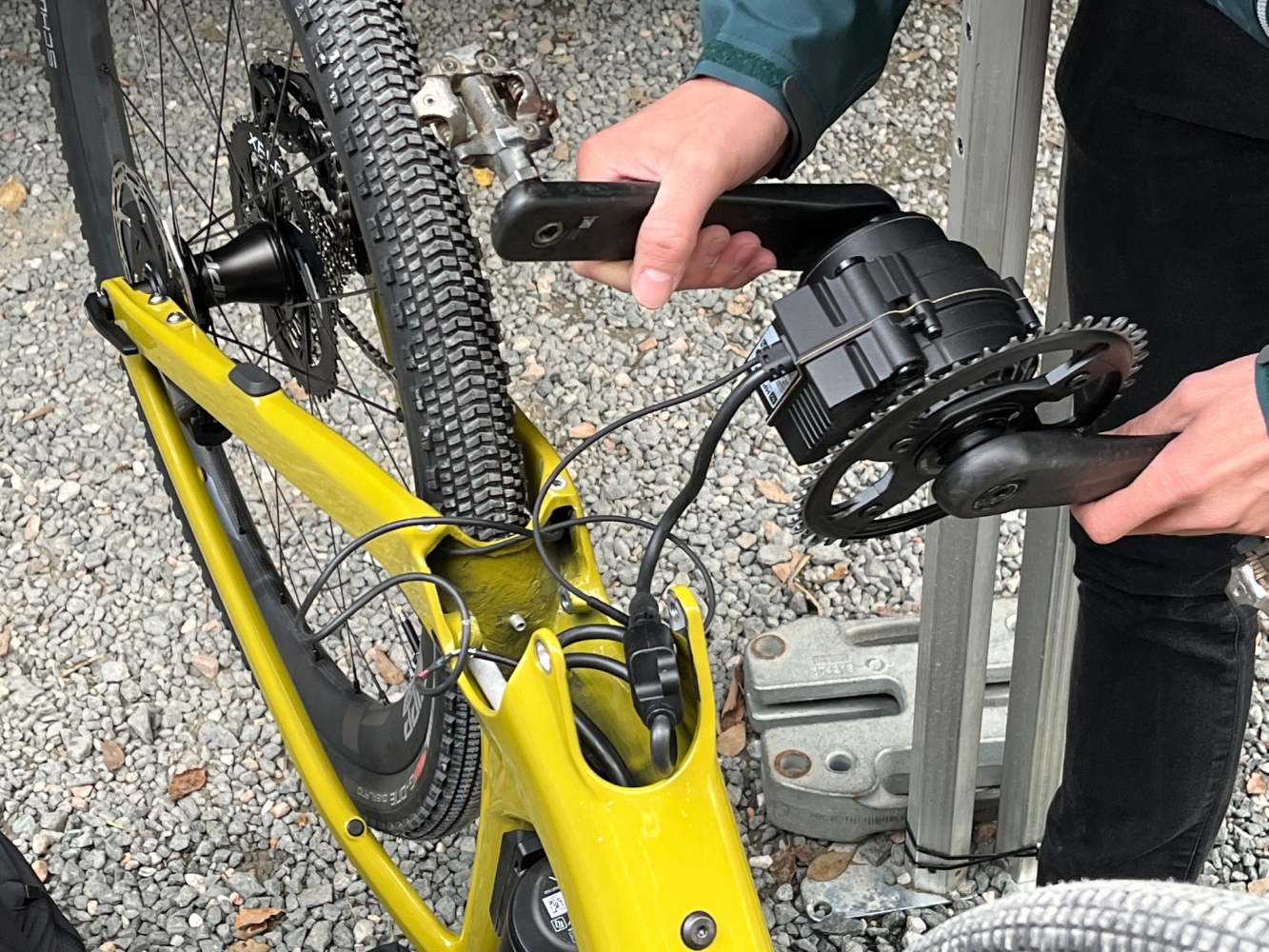
A demonstration of the TQHPR50 motor removing from its bottom bracket housing.
Scott Solace eRide 10 and Solace Gravel eRide 10: value and conclusions
Both the Scott Solace eRide 10 and Solace Gravel eRide 10 are unquestionably amazing bikes, with both platforms managing to hit the sweetspot of being agile and nimble both on and off-road.
Scott has gone to great lengths to try and achieve a great weight distribution, keeping everything predictable and neutral.
The mass and position of motor and battery is sufficiently svelte as to be barely noticeable. In fact, one of the first things that struck me after both rides is that there is no reason why6 you couldn’t just leave the battery system switched off if necessary.
Weighing just 3.5kg, the TQ HPR50 e-bike system is hardly a hindrance to carry round, making both the Solace eRide 10 and Solace Gravel eRide 10 ideal bikes for endurance-style events and adventures, where you just need some assistance to complete the day after a particularly windy or hilly section.
In fact, with the execution of top-drawer finishing kits on both these top-end bikes, you'll soon find yourself believing that you're capable of riding as swiftly and constantly as a pro rider.
But I started this first ride questioning the need for both bikes, and I guess I still am.
The gravel bike is an blast. An absolutely brilliant bike that I defy even the biggest e-bike sceptic not to be entertained by. Its poise and handling are thanks to a very well thought-out design and impressive battery range which all come together in a fantastically fun package.
However, the $10,099.99/£9,199 price tag is always going to be hard to swallow when it comes to the top Solace Gravel eRide 10. Would the smiles be any less on the Solace Grave eRide 30, which comes equipped with a SRAM Rival mechanical groupset?
If I hadn't ridden this beaut of a beast, then I would have been none the wiser, but now I have I'd probably sell other bikes to fund any shortfall required for the top-of-the range one.
The Scott Solace eRide 10 road bike does still leave me head-scratching. It's a brilliant frameset and finishing kit no question, which makes you a miles better rider without the motor, so I'm sort of wondering how much I would really need the assistance that the motor gives.
It'll only really be of use in hilly terrain, where the climbing knocks enough off your speed in order to click in to action. Other than than, you might find that your own leg power will be overriding the system constantly.
Factor in that it'll set you back $11,999.99/£10,999 and you really do have to want that hill to justify it. There is a Scott Solace eRide 20 that does away with Dura-Ace in favour of Ultegra Di2, and you'll sacrifice the Zipp 303s for Syncros carbon wheels instead, but at $7,999.99/£7,299 you'll be saving $4,000/ £3,700, and while still a shedload of dosh, this is slightly more palatable.
But even then, I can't see why I wouldn't just bite the bullet and get the outlandishly excellent Scott Solace Gravel eRide 10. You can always stick slicks on for the road, with even the 1x gearing more than enough for most riding, but you’ll be reluctant to take top-end Dura-Ace or Ultegra off-roading.

Thank you for reading 20 articles this month* Join now for unlimited access
Enjoy your first month for just £1 / $1 / €1
*Read 5 free articles per month without a subscription

Join now for unlimited access
Try first month for just £1 / $1 / €1
Get The Leadout Newsletter
The latest race content, interviews, features, reviews and expert buying guides, direct to your inbox!

Andy has been riding and racing bikes since he was a youth rider over 30 years ago and has competed at everything from track to Enduro, and just about every cycling discipline in between. A Mechanical Engineer by profession, he's fastidious when it comes to writing about how cycling kit is designed and crucially, actually works in practice.
-
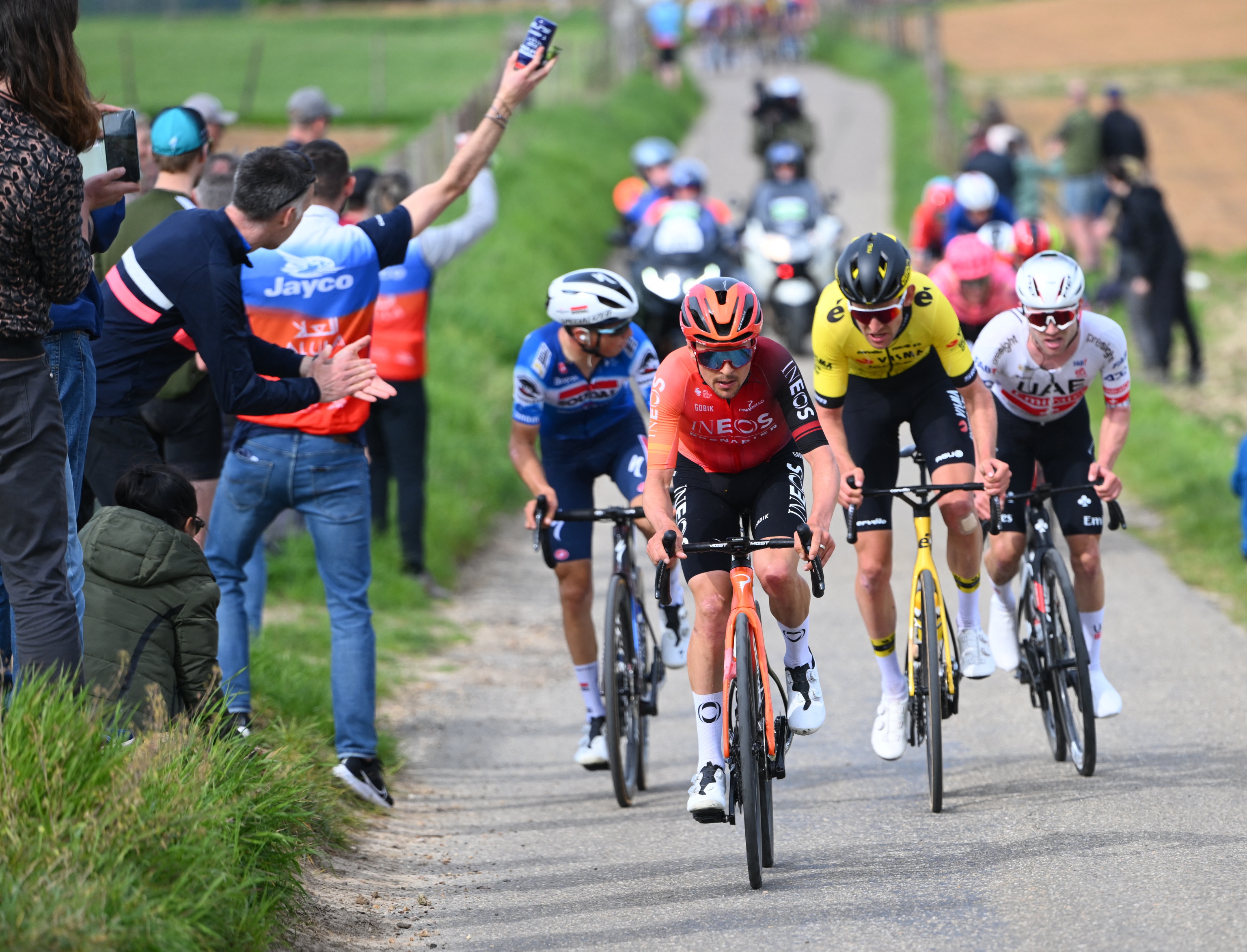 How to watch the Amstel Gold Race 2025: Everything you need to live stream the Dutch Classic
How to watch the Amstel Gold Race 2025: Everything you need to live stream the Dutch ClassicAll the broadcast information for the first of the Ardennes Classics on 20 April with Tom Pidcock – here's how to watch Amstel Gold Race online and on TV.
By Adam Becket Published
-
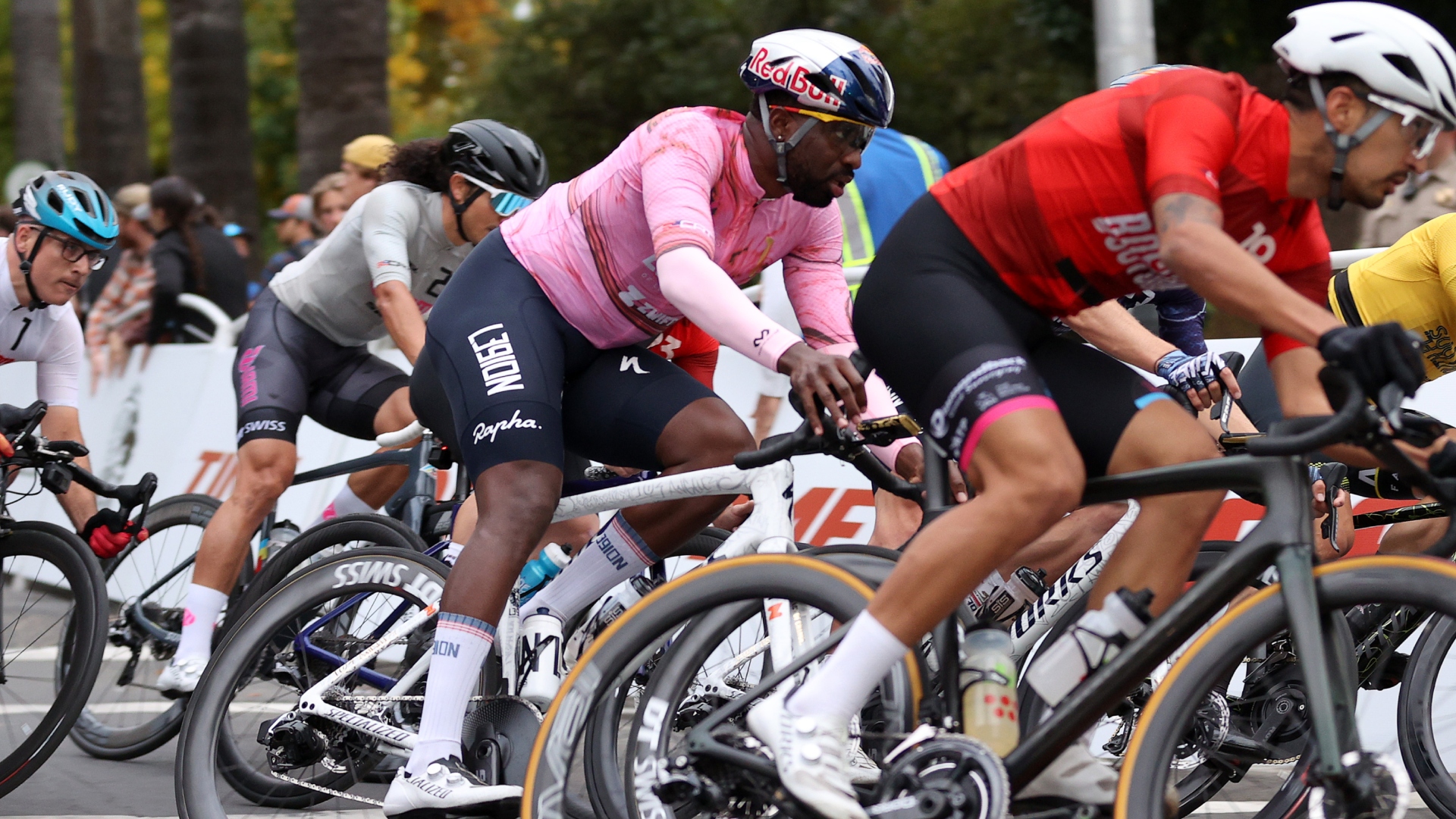 Can you make a living as an American domestic road racer? A look inside the part-time professionalism of the American road peloton
Can you make a living as an American domestic road racer? A look inside the part-time professionalism of the American road pelotonAfter decades of booms and busts, the American road scene finds itself in a fragile place. We spoke to riders to understand the reality of chasing the dream on home soil
By Logan Jones-Wilkins Published
-
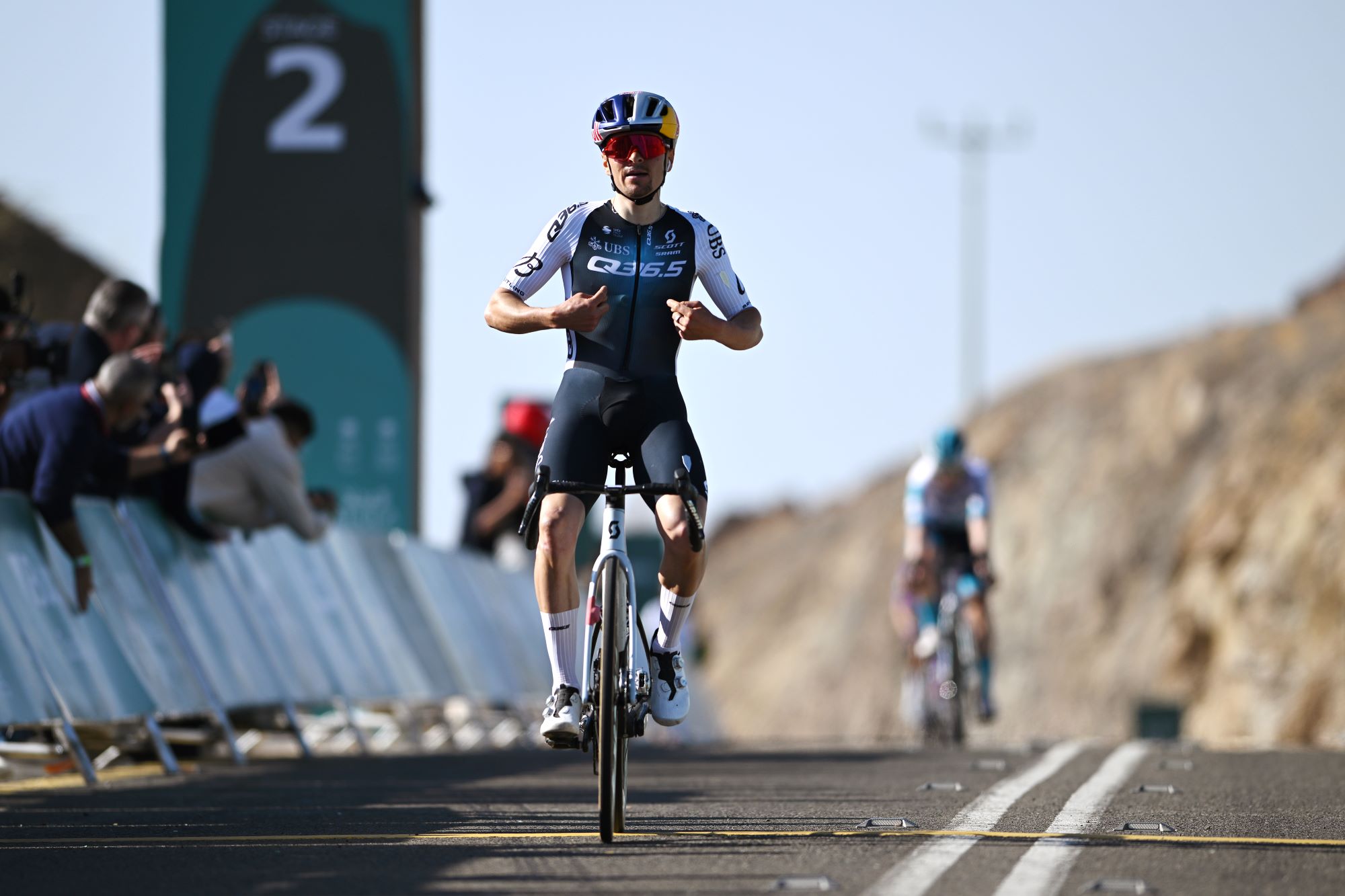 What does Q36.5 mean? We asked the people behind the Italian kit brand that sponsors Tom Pidcock's team
What does Q36.5 mean? We asked the people behind the Italian kit brand that sponsors Tom Pidcock's teamQ36.5's Luigi Bergamo and Lodovico Pignatti Morano take on Cycling Weekly's Q&A
By Tom Thewlis Published